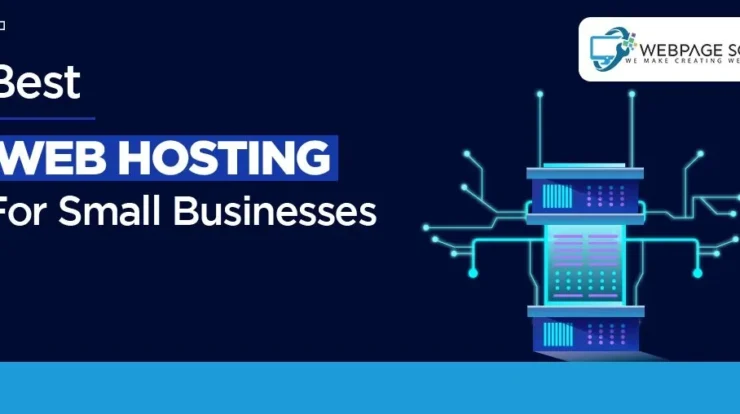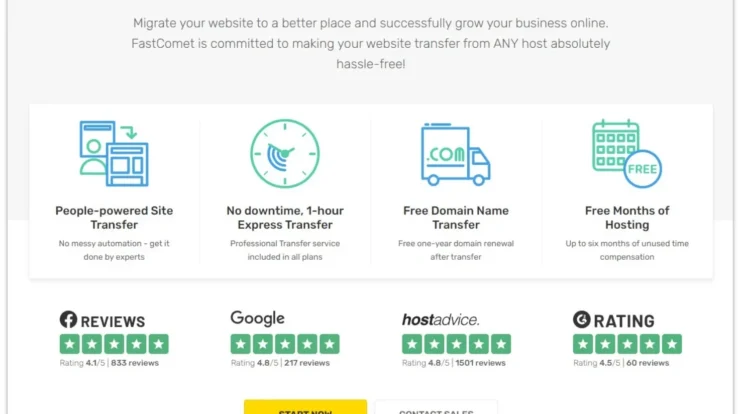
Websites experiencing soaring traffic demands robust infrastructure to maintain seamless performance and avoid disruptions.
Choosing the right hosting solution is crucial for ensuring your online presence remains accessible, responsive, and delivers a positive user experience, even during peak usage.
This meticulous exploration delves into the critical factors influencing optimal hosting for high traffic performance.
From rapid server response times to scalable bandwidth, understanding these technical intricacies empowers website owners to select the best hosting service, safeguarding against website downtime and user frustration.
The ability to handle high traffic loads is paramount for any site hoping to achieve sustained success and expansion.
This is especially true for e-commerce platforms, news websites, and other resources that see a significant influx of visitors during peak periods.
A poorly performing site, burdened by slow loading times or frequent outages, can severely impact search engine rankings, conversion rates, and ultimately, profitability.
Finding the ideal hosting for high traffic performance requires careful consideration of numerous variables, including server resources, network infrastructure, and the hosting provider’s track record.
This comprehensive guide highlights the key characteristics of the top hosting options, equipping readers with the knowledge to select the best hosting for high traffic perf that meets their specific needs and future growth projections.
Server Response Time and High Traffic Performance
Optimal server response time is paramount for high-traffic performance, directly impacting user experience and website stability.
A hosting provider prioritizing fast server response times enables quicker page load speeds, a critical factor in maintaining visitor engagement and minimizing bounce rates.
Slow loading times frustrate users, leading them to abandon a website, impacting conversions and overall site effectiveness.
Consequently, a hosting solution with a dedicated focus on reducing latency in server responses is essential for ensuring optimal high traffic performance.
Measuring server response times is crucial in identifying potential bottlenecks and areas requiring improvement within a hosting environment.
Utilizing tools to monitor server response time provides valuable insights into the system’s performance under pressure, allowing for proactive optimization strategies.
Websites experiencing high traffic often encounter fluctuating loads, and a hosting platform with resilient servers can effectively handle these variations.
Reliable servers with robust infrastructure underpinning them form the foundation for ensuring that best hosting for high traffic performance remains consistent.
Server response time directly correlates with the end-user’s perception of website speed.
A fast server response time translates into a better user experience, encouraging visitors to explore and engage further with the site.
This fast response to user requests, coupled with robust server infrastructure, is fundamental to achieving high traffic performance.
Selecting a hosting service with a proven track record of handling high traffic volumes and delivering consistent server response times is essential for maintaining a positive user experience.
Furthermore, the ability to scale server resources is a critical aspect of maintaining optimal performance during peak traffic periods.
Scalability ensures that the hosting platform can automatically adjust resources to match traffic demands.
This responsiveness is key to ensuring smooth operations even when significant traffic spikes occur.
This responsiveness under fluctuating traffic conditions is an integral aspect of best hosting for high traffic perf.
A high traffic load can overwhelm less capable systems, which then leads to slow response times.
A hosting provider with the capacity to accommodate these fluctuations without degrading performance is crucial.
This resilience to fluctuating traffic loads and consistently quick server response times are critical components of best hosting for high traffic performance.
Server Response Time and High Traffic Performance
Optimal server response time is paramount for high-traffic performance, directly impacting user experience and website stability.
A hosting provider focused on rapid server response times enables quick page load speeds, essential for visitor engagement and minimized bounce rates.
Slow loading times directly correlate with user frustration and abandonment, impacting conversions and overall site efficacy.
A hosting solution emphasizing latency reduction in server responses is essential for optimal high-traffic performance. This minimizes the time between a user request and the server’s response, leading to a seamless user experience.
Measuring server response times is crucial for identifying performance bottlenecks and areas needing improvement within a hosting environment. This data informs strategies to enhance website responsiveness.
Utilizing tools to monitor server response time under varying load conditions provides valuable insights. Monitoring tools aid in understanding how the system performs during periods of high traffic and potential issues.
High traffic hosting solutions often incorporate techniques like caching mechanisms to shorten server response time. This process stores frequently accessed data, enabling faster retrieval, leading to quicker page loads and a better user experience.
Server configurations play a crucial role in minimizing latency. A well-optimized server configuration with appropriate resources, including sufficient RAM and CPU power, is vital for rapid response times.
Hosting providers offering dedicated servers with customized configurations provide more control over resource allocation. This customization allows for better optimization to handle high traffic volumes and improve performance.
Ensuring that the chosen hosting provider supports multiple connection requests concurrently is critical. A robust hosting infrastructure allows the servers to handle the demands of a large number of users simultaneously.
High-traffic websites need hosting solutions that can scale to meet varying demands. A scalable platform ensures that performance does not degrade as visitor numbers increase.
A server that can adequately handle large volumes of concurrent traffic is a crucial component in the best hosting for high traffic performance. This is essential to accommodate fluctuations in traffic without compromising on response times.
Efficient resource management within the hosting environment contributes significantly to achieving quick server response times. A well-managed system ensures that resources are used effectively, leading to better performance and stability.
Choosing a hosting provider with a proven track record of handling high-traffic websites is advisable. Reviews and testimonials from existing clients provide insight into the provider’s ability to meet the demands of high-volume traffic.
Ultimately, the optimal hosting environment for high traffic performance prioritizes rapid server response times, scalable bandwidth, and a robust infrastructure that can adapt to fluctuating traffic demands. This translates to a seamless user experience and sustained website success.
Server-Side Optimization for High Traffic Performance
Server-side optimization is crucial for achieving high-traffic performance, ensuring your website remains responsive and functional even under heavy load.
This aspect of hosting goes beyond simply selecting a powerful server; it involves fine-tuning server configurations and implementing techniques to optimize the processing and delivery of content to users.
A key component of server-side optimization lies in minimizing the processing time required to generate each page, as this directly affects the loading time perceived by the visitor.
Utilizing a caching mechanism is a critical strategy within server-side optimization for high traffic hosting, reducing the server load by storing frequently accessed content locally and serving it instantly without repeating the generation process.
By implementing a robust caching strategy, hosting providers can effectively reduce server-side processing time, leading to a noticeable improvement in website responsiveness and ensuring a seamless user experience for high traffic.
Another significant element is choosing a hosting provider that offers scalable infrastructure.
Scalability is essential for handling fluctuating traffic loads, allowing your hosting to adjust resources dynamically and efficiently allocate computing power as demand increases, ensuring a consistent level of performance during peak traffic periods.
The selection of appropriate server hardware, including RAM, CPU, and storage, plays a critical role in the overall performance of your website under high traffic conditions.
Hosting providers should employ high-performance servers, capable of handling substantial amounts of data and requests concurrently, to ensure smooth operation under high traffic.
Using technologies designed for handling numerous concurrent requests, such as load balancers, effectively distributes traffic across multiple servers, preventing overload on a single point of failure and ensuring consistent high traffic performance.
Choosing a hosting provider equipped to address these optimization strategies is vital for high-traffic websites that need high performance.
Careful consideration of server-side optimization techniques, including caching mechanisms, scalable infrastructure, and high-performance hardware, is essential for maintaining website performance when dealing with high traffic volumes.
The correct application of server-side optimization practices is fundamental in ensuring a positive user experience and maintaining website functionality during peak traffic periods. This is pivotal to the best hosting options.
Caching Strategies for High Traffic Performance
Effective caching strategies are crucial for high-traffic websites, significantly impacting user experience and server performance.
Caching involves storing frequently accessed data (like static assets, pages, or database results) on a temporary storage location.
This temporary storage allows servers to quickly retrieve this data, reducing the need for database queries or complex processing, which ultimately improves response times.
For a website experiencing high traffic, implementing intelligent caching solutions becomes a critical aspect of maintaining fast loading times and a smooth browsing experience for users.
Different caching strategies, including object caching, browser caching, and CDN (Content Delivery Network) caching, can be implemented depending on the specific needs and characteristics of the website. Choosing the right caching approach directly impacts the efficiency of your hosting infrastructure.
Object caching, for instance, can store frequently accessed database results in memory, vastly speeding up database interactions.
Browser caching stores static website files (like images and CSS) on users’ browsers, reducing the amount of data needed to be downloaded with subsequent visits to the site.
CDNs store copies of static content on servers located geographically close to users, dramatically reducing latency and improving load times.
Implementing effective caching techniques is fundamental to ensuring that high traffic websites remain fast and responsive. This is a key element in ensuring optimal hosting for high traffic performance.
Moreover, proper configuration of caching mechanisms, alongside appropriate server-side optimization, is key to maintaining site speed and reducing server load under pressure.
A well-tuned caching strategy in a robust hosting environment directly translates to a significantly improved user experience for your website’s visitors.
Optimizing your website’s performance under high traffic is paramount for a positive user experience and sustained business growth.
The crucial role of the right hosting provider for high traffic performance cannot be overstated; it directly impacts everything from page load speed to server uptime, ultimately influencing visitor engagement and conversion rates.
Choosing the best hosting for high traffic performance is not just about technical specifications; it’s about aligning your website’s needs with a platform capable of handling the demands of peak traffic periods.
This article highlighted the essential factors to consider when selecting a hosting solution, emphasizing features like server resources, scalability, security, and robust support, all key components of high-performance hosting solutions.
In conclusion, achieving optimal website performance under high traffic necessitates a strategic selection of the best hosting for high traffic perf. By carefully evaluating the factors discussed – from server configurations and bandwidth to the provider’s technical capabilities – you can confidently build a platform that thrives, handles peak traffic demands seamlessly, and ensures a smooth, enjoyable experience for your visitors. The right choice for your hosting needs directly translates to a better online experience, improved SEO rankings, and ultimately, enhanced business success. Investing time in selecting the best hosting for high traffic perf is not an option; it’s a necessity for any website aiming to achieve its full potential in today’s demanding online environment.






